Deliciously Easy Cacio E Pepe (and just 3 ingredients!)
Delicious, extra creamy cacio e pepe made with just three simple ingredients! Cacio e Pepe is made with pasta, grated cheese, and black peppercorns. Treat each component with love and care, and I promise you, you’ll have the best cacio e Pepe you’ve ever had!
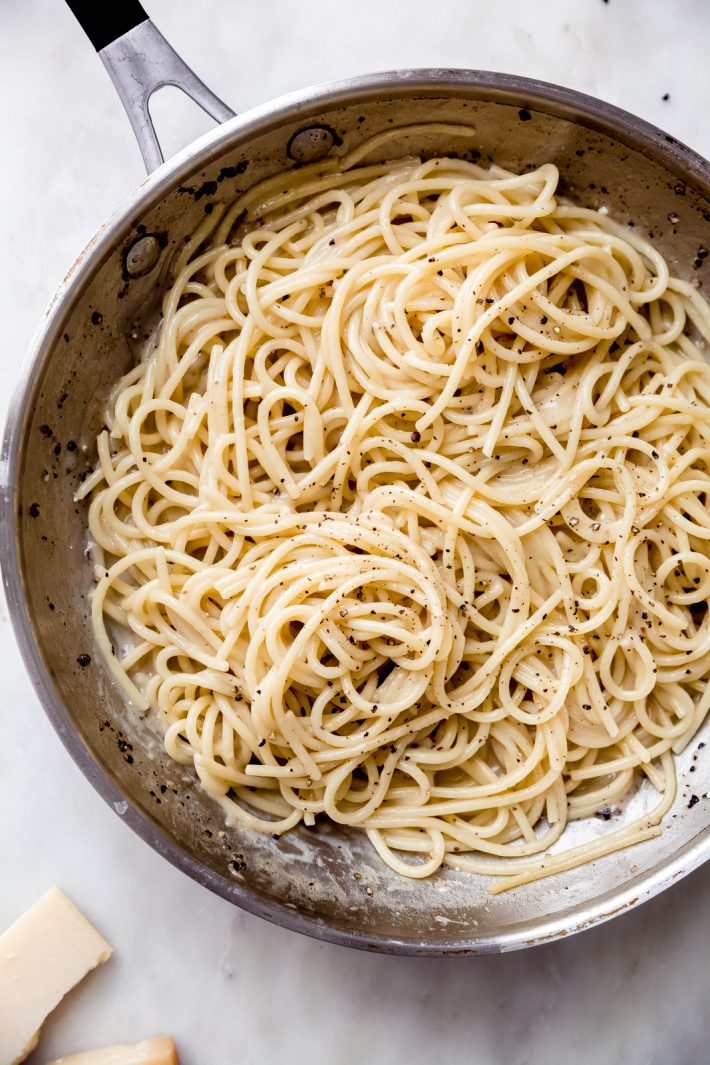
I won’t even tell you how many bowls of cacio e pepe I had when we went to Italy a couple of summers ago.
And after consuming bowls and bowls of it, I started to realize, it can vary quite a bit from restaurant to restaurant. Some bowls didn’t have enough cheese sauce, some were pretty heavy-handed with the black pepper. The first bowl of cacio e pepe I had was the absolute best, it was at a little cafe in Trastevere. We had an early dinner outside on the cobblestone streets lined with tables. Tonnarelli made it with chewy noodles, the perfect amount of creamy cheese sauce, and aromatic coarse cracked pepper.
I’ve been working hard to mimic their recipe from the time I’ve gotten back and I’ve finally gotten it to the sweet spot.
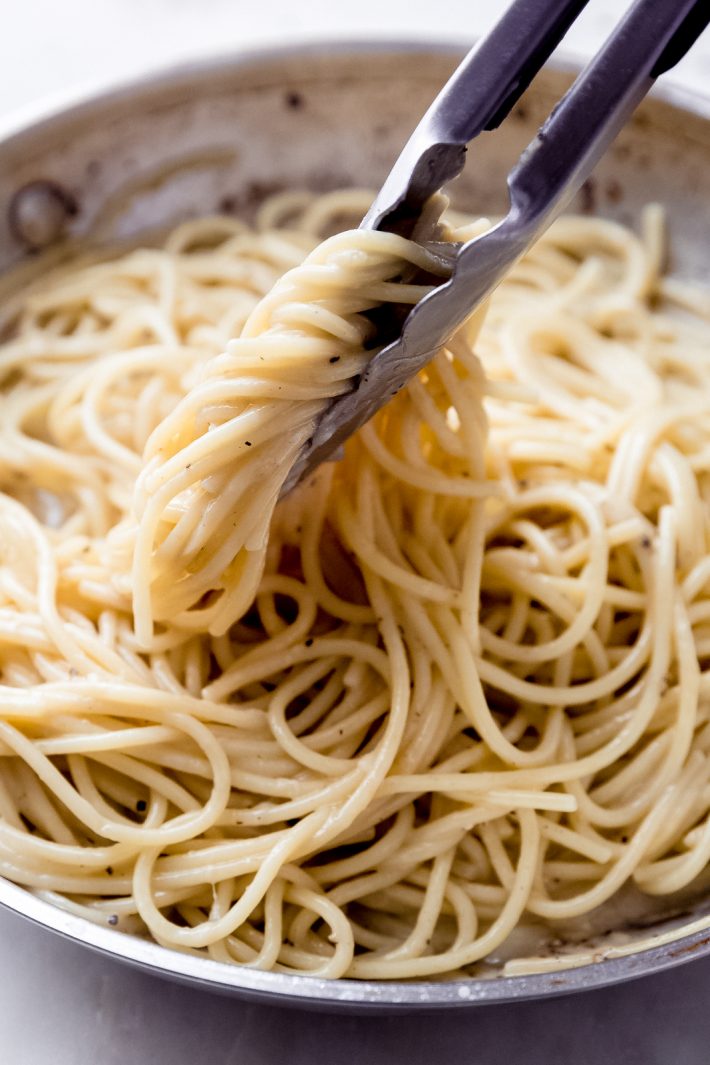
What is cacio e pepe?
Cacio e pepe is a Roman pasta dish that literally translated means ‘cheese and pepper’. It is typically made with 3 ingredients: pasta, black pepper, and grated Pecorino Romano cheese. The type of pasta used varies. Spaghetti or tonnarelli are the most common types.
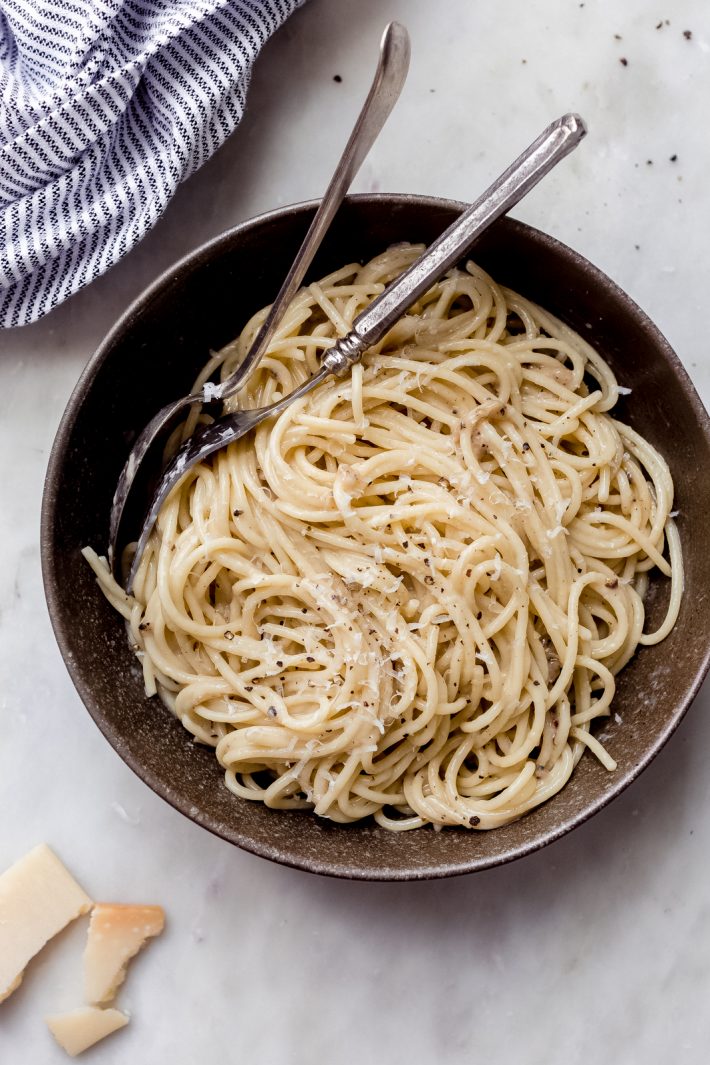
What ingredients do you need to make spaghetti in cheese sauce:
- Pasta: Traditionally spaghetti and tonnarelli are the most commonly used pasta to make this recipe. But you could also use bucatini or linguine if that’s what you have on hand.
- Black pepper: I suggest using a good quality black peppercorn for this recipe. I specifically like tellicherry black peppercorns for this recipe. I purchase them online as the price is very reasonable and they ship right to your door! They are the finest peppercorns in the world. And a 3-ingredient pasta dish needs only the best ingredients!
- Grated cheese: Pecorino Romano cheese is what is typically used but Parmigiano Reggiano would also work if that’s what you have in the fridge. Grana Padano also melts beautifully and some people prefer to use that.
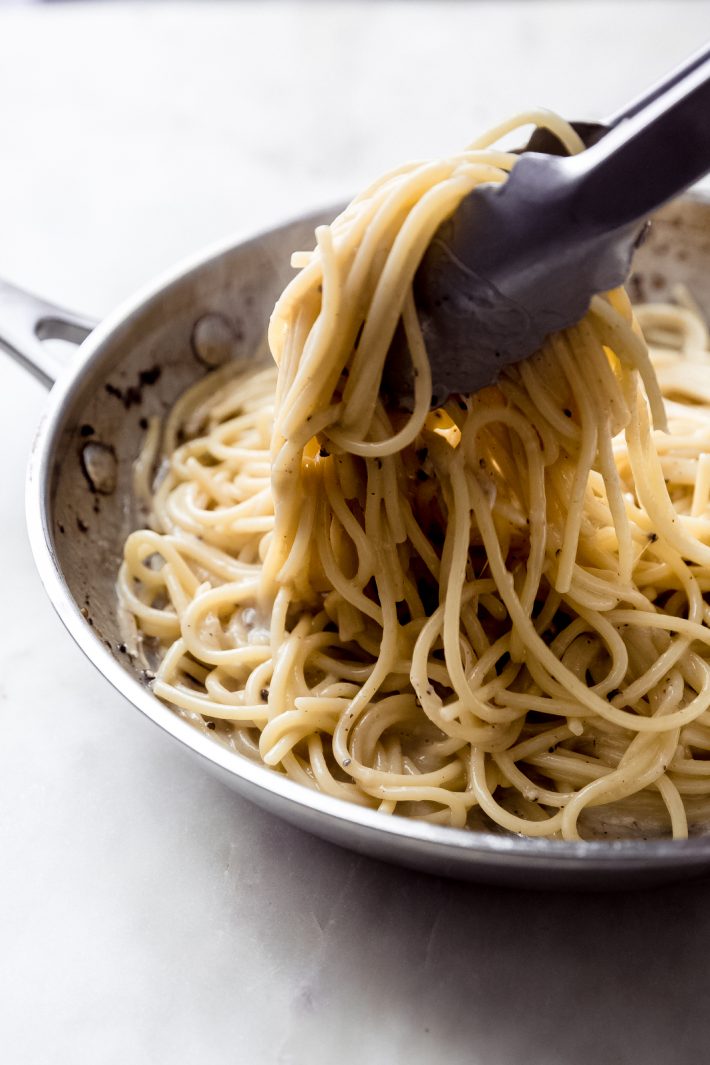
Tips for making the best Cacio e Pepe:
- Use fresh black peppercorn, and dry roast them in a pan. This is a tip that I picked up from my mom when she’s making a batch of homemade garam masala. She’ll dry roast the spices to release their natural oils in the pan, then she lets them cool and grind them up. That is exactly what we need to do with our whole black peppercorn for this recipe.
- Use good quality spaghetti, bucatini, or tonnarelli. I prefer pasta that doesn’t have a shiny outer surface. Commercial brands that are more commonly available usually do. Instead, look for pasta that has a rougher outer surface. This type of pasta has more surface which means that the starch releases easily into the pasta water – and we need to make the pasta water starchy so we can use that later to make our cacio e pepe sauce silky smooth at the end.
- Use less water to boil your pasta. I know, this goes against everything you’ve ever learned about boiling pasta! But since we discussed how adding additional starch to your cacio e pepe makes a smoother sauce, we need to up our starch game. By using less water, we increase the amount of starch per cup of water (and thus adds for silky smooth texture to our sauce without changing anything else)
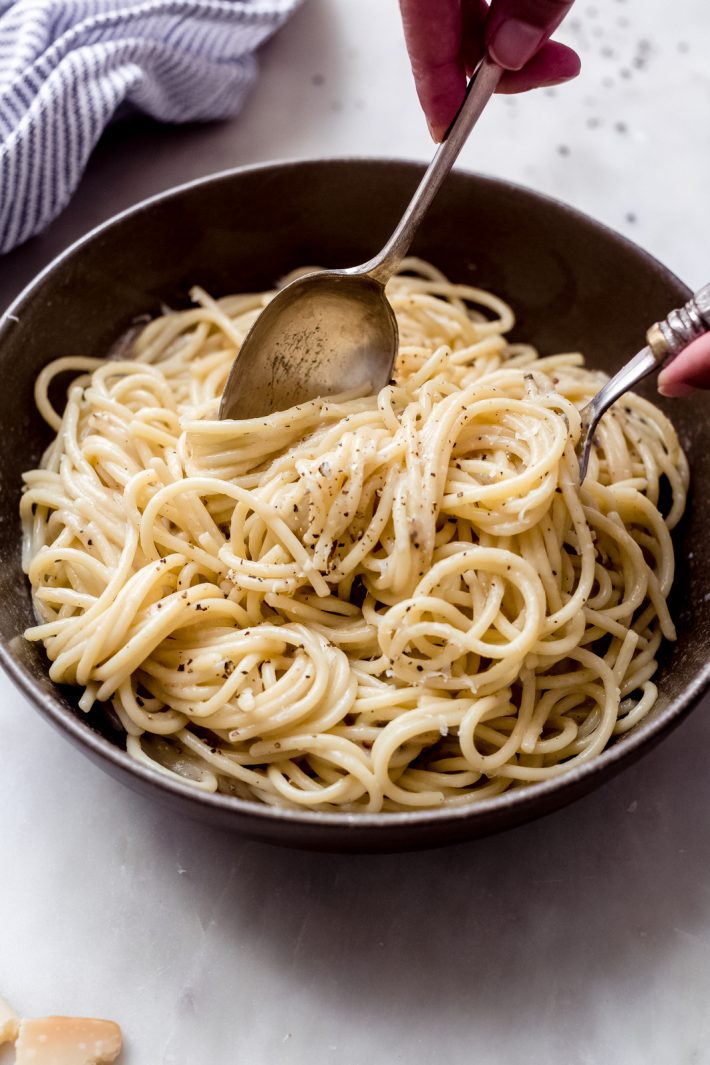
If you like this recipe, you might also like:
- Eggs in Purgatory
- Italian Wedding Soup
- Tuscan Tomato Bread Soup
- Shrimp Gnocchi in Pomodoro Sauce
- Spicy Shrimp Pasta with Tomatoes and Garlic
Deliciously Easy Cacio E Pepe
Delicious, extra creamy cacio e pepe made with just three simple ingredients! Cacio e Pepe is made with pasta, grated cheese, and black peppercorns. Treat each component with love and care, and I promise you, you’ll have the best cacio e Pepe you’ve ever had!
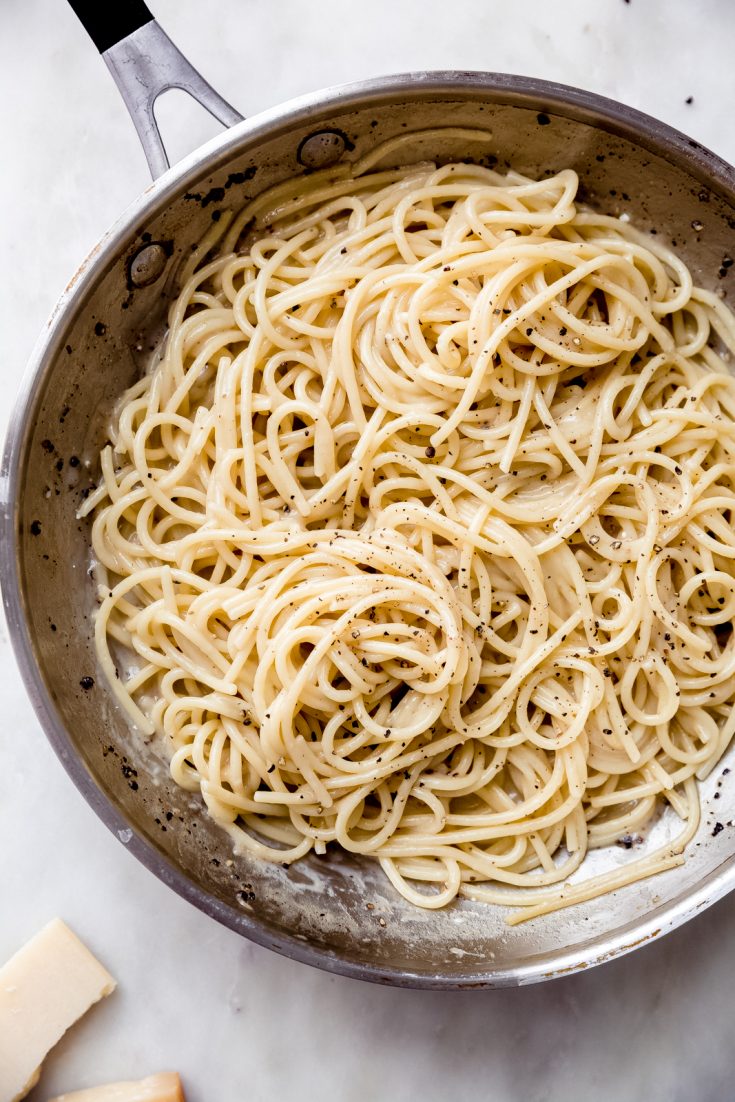
Ingredients
- 1 tablespoon whole tellicherry peppercorn
- 8 ounces spaghetti, tonnarelli, bucatini, or linguine
- kosher salt
- 1 ¼ cup freshly grated Pecorino Romano, Parmigiano Reggiano, or Grana Padano cheese (or a combination of these)
Instructions
- PEPPERCORNS: Using a mortar and pestle, crush the peppercorns until they break down into a coarse grind.
- PASTA: Bring 2 quarts (8 cups) of water to a boil in a pot. When boiling, season the water with about a tablespoon of salt. Taste the water and make sure it’s slightly salty. You don’t want to heavily salt the water because we’re going to reduce it quite a bit! Add the pasta and boil it for 2 minutes less than what is stated on the package.
- CHEESE AND PEPPER: While the pasta is cooking, grate the pecorino in a medium bowl, set aside for now. When there are 4 minutes to the pasta remaining, add the coarse pepper to a skillet and toast the pepper over medium-low heat, about 1 minute. You want to gently toss or swirl the pan to make sure the pepper isn’t burning. When you can smell the toasty black pepper, it’s done. Remove roughly half to a small bowl and leave the rest in the frying pan with the heat on medium-low. Immediately add a ¼ cup of starchy pasta water to the pepper and allow it to simmer, you want the pasta water to reduce by half. When there is 2 minutes remaining in the pasta to be done, add ⅓ cup of the pasta water to the grated cheese and stir together using a rubber spatula to form a smooth cheese sauce. You might need an additional tablespoon or two of the starchy water to form a queso-like sauce.
- CACIO E PEPE: When the pasta is done boiling, remove the pasta from the pot to the frying pan using a pair of tongs. Turn the stove on to the low setting and toss the pasta in the pepper mixture in the skillet. Then stir in the prepared cheese mixture and continuously toss the pasta to make sure everything is evenly combined. If the sauce needs to be loosened, add ¼ cup of starchy water and toss until a smooth sauce glazes the spaghetti. You’ll need a little more water than you think because the pasta does soak it up quite fast. Taste and adjust with additional pepper as desired. Serve immediately with additional shaved pecorino and the pepper we set aside earlier.




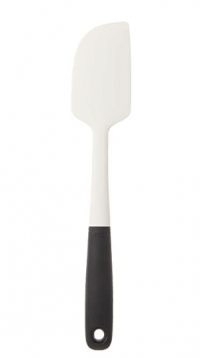

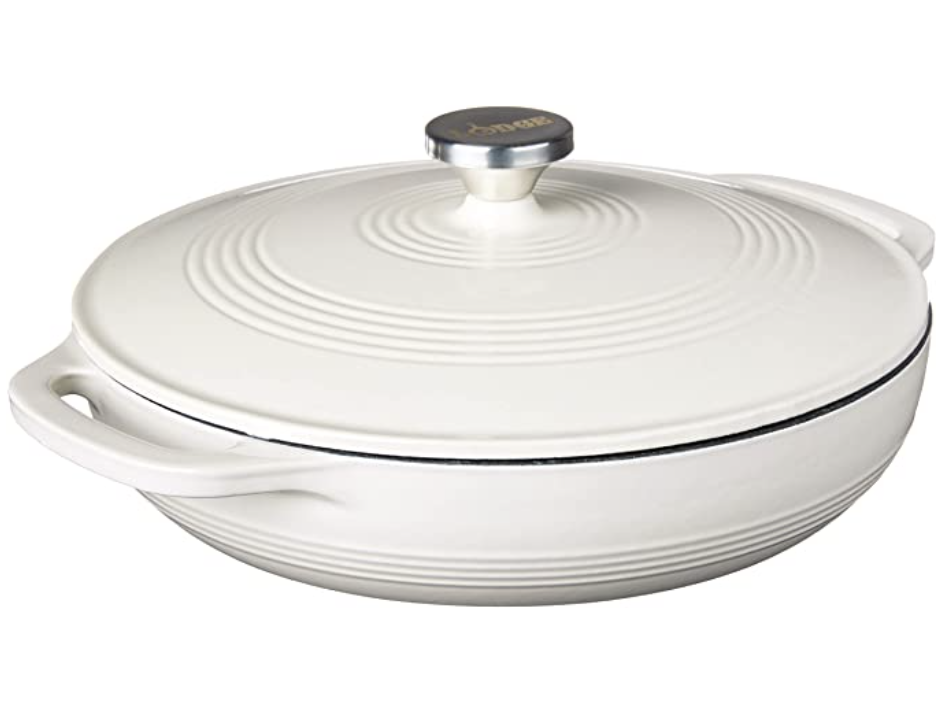

Pingback: 29 Comfort Food Recipes You’ll Want To Make On Repeat – s222
Thank you thank you!!!! Finally I properly made this right, the classic 3-ingredient way.
I ground the pepper in a grinder, and my grana padano was pre-grated from Fresh Direct, but I think I followed the instructions to a T and it came out perfect. No butter or oil needed!!!! I’m glad I took out half the pepper like you said, because when I finally tasted, it was enough (and I lovvvvve pepper).
Will definitely make again!